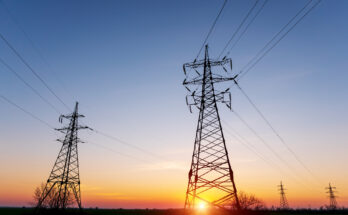“The electricity bill, the purchase of the Deer Park refinery in Houston and the granting of Zama to Pemex hint that President López Obrador is more than determined to ramp up his energy nationalism stance during the next three years,” Adrián Duhalt, postdoctoral fellow in energy studies at Rice University’s Baker Institute and seasoned expert and academic in the Mexican energy sector, told EP’s Mexico Gas Price Index.
“For AMLO’s government to turn things around, development of conventional resources is not going to be enough,” Duhalt said. “If he chooses to go down that path, Mexico’s users, including [state power utility Comisión Federal de Electricidad, aka CFE], will certainly continue to rely on natural gas supply from the U.S. Such a scenario makes us ponder Mexico’s options in the short term.”
Duhalt has been a postdoctoral fellow in Mexico energy studies for the Center for Energy Studies and the Center for the U.S. and Mexico at the Baker Institute since 2017. His research agenda at the Baker Institute deals with a variety of energy issues in North America, including market and policy dynamics around natural gas, petrochemicals, fertilizers and Mexico’s Pemex. He is currently working on projects related to governance in industrial clusters (petrochemicals) and the local impact of structural changes in Mexico’s energy sector.
Prior to joining the Baker Institute, Duhalt was an associate professor at Universidad de las Américas Puebla (UDLAP) from 2013-2019, where his teaching focused on economic geography, corporate strategy and energy issues in Mexico and North America. In 2015, Duhalt designed and coordinated UDLAP’s Certificate Course, called “Mexico’s Energy Reform: Public Policies Challenges and Business Opportunities.”
Prior to joining UDLAP and the Baker Institute, Duhalt earned his Ph.D. in economic geography from the University of Sussex in the U.K. in 2012. He also holds a master’s degree in science and social research methods from the University of Sussex and a bachelor’s degree from the Universidad Veracruzana in international business management.
ENERGY POLITICS: You recently wrote a report about Mexico’s need to develop infrastructure projects in the country’s southern zone, particularly in the interoceanic corridor of the Isthmus of Tehuantepec. In terms of energy infrastructure, what project/s do you think would best benefit Mexico’s southern region?
Duhalt: There is no doubt that most of Mexico’s southern states lag behind their central and northern peers in terms of social, economic and industrial development. With Andrés Manuel López Obrador (AMLO) being from Tabasco, where he is pouring billions of dollars to build a refinery, it comes as no surprise that his government is pushing for investment in that part of the country.
Are firms hesitant to go southward? It is not only the rhetoric of the President that may influence investors’ decisions. The region as a whole needs to upgrade its infrastructure if private-backed projects are to materialize, and that is precisely the case for the energy industry and other associated activities such as petrochemicals.
The south of Veracruz houses the largest agglomeration of petrochemical/chemical companies in Mexico, and one of its shortcomings is the tight availability of inputs, mostly natural gas and ethane, both of which feed the most important supply chains found in the region. As the prospects to increase domestic production of ethane are doubtful, imports could be seen as a promising path to explore in the sense that it may lead to positive spillovers, but for that to happen, import infrastructure must be in place.
If Mexico’s government seeks to shore up economic growth in the Isthmus of Tehuantepec, of which southern Veracruz is part, infrastructure projects such as an ethane import terminal cannot be ruled out. Projects like this are fundamental for AMLO’s regional development strategy, and it is important that authorities from the three levels of government are supportive. The same line of reasoning applies to other regions of southern Mexico, like the Yucatan Peninsula, where infrastructure to make the distribution of fuels more efficient will definitely have a positive impact.
ENERGY POLITICS: For years, Mexico has struggled to supply the southeast region of the country with natural gas. In your opinion, how could Mexico resolve this issue and provide the region with a more reliable supply of natural gas?
Duhalt: That is a conversation Mexico’s policymakers have had for a while, and it is not a condition exclusively associated with this government. AMLO’s administration is well aware that limited supply of natural gas to southeastern states is a setback that jeopardizes his regional development plans, and, without a doubt, is also informed of the several options at its disposal. In other words, it is rather difficult to conceive that Mexico’s government can ignore the available options to resolve the issue at hand.
The question we should be asking is: What prevents AMLO’s administration from taking the appropriate steps? It has been three years since he took office and no convincing solution or action plan appears to be yet in the making. In a context of limited financial resources and a nationalistic approach in energy matters, the discussion seems to be driven by political motives and not precisely by economic rationale.
ENERGY POLITICS: How do you think the results of Mexico’s recent midterm elections could impact the natural gas industry?
Duhalt: Although AMLO’s control over the Chamber of Deputies weakened to some degree, his government is determined to push for a reform of the power sector, which many see as favorable to state utility CFE. While it remains to be seen if the Morena-led coalition will assemble the needed support from certain quarters of the opposition to pass the bill, the reality is that whatever the outcome, natural gas demand in Mexico – and hence import dependency – is set to increase in the years to come.
Also worrying is the fact that domestic production will continue to disappoint, at least throughout the second half of AMLO’s term. If oil and fuel production at Pemex as well as the role of the CFE were priorities for AMLO when controlling both houses of Congress (2018-2021), now that the race to 2024 has commenced and without a qualified majority at the Chamber of Deputies, the political game around the presidential transition will make AMLO double down his bet on these activities. Despite the urge to pay attention to the natural gas industry, stakeholders should not be surprised if policymakers’ attention is elsewhere.
ENERGY POLITICS: In recent weeks, President López Obrador has discussed his intentions for an electricity reform that would strengthen the CFE so that it continues to be the market’s dominant power provider. What are your thoughts on this initiative, and do you think it would have the support in congress to be approved?
Duhalt: AMLO cannot conceive a domestic power sector where state utility CFE risks yielding market share. That goes against his political platform. And, as he has stated, one of his legislative priorities is to reform the power sector with the goal to keep private players at bay and cement CFE’s influence. But with the Morena-led coalition losing the qualified majority in the lower house of Congress during the past midterm elections, AMLO will have to persuade part of the opposition to support his bill. That looks challenging amid a context where both the PRI and PAN seek to prevent the growth of the President’s party and the further implementation of a centralized energy policy.
ENERGY POLITICS: In the first three years of this administration, there have been significant changes to the Mexican energy industry. What further changes do you foresee in the industry during the next three years?
Duhalt: The electricity bill, the purchase of the Deer Park refinery in Houston and the granting of Zama to Pemex hint that President López Obrador is more than determined to ramp up his energy nationalism stance during the next three years. In that regard, the questions that linger are: What is next? What else does AMLO have in mind?
There is not a simple answer to that, but, given the needs of the country and the government’s program, it seems that changes can potentially materialize in the realm of natural gas infrastructure in southern Mexico. With the Interoceanic Corridor among the priorities of this government and the interest to encourage private sector investment in the region, failing to address supply of natural gas to the isthmus of Tehuantepec would prove to be politically and economically costly for the government and the region.
ENERGY POLITICS: In your opinion, what are the most pressing challenges for Mexico’s natural gas industry currently?
Duhalt: At first glance, one may highlight that the disastrous combination between the degree of import dependency and current domestic production levels are the most pressing challenges for Mexico’s natural gas industry. And they are indeed, but both are consequences, not causes, and that is where Mexico’s focus should be.
For AMLO’s government to turn things around, development of conventional resources is not going to be enough. If he chooses to go down that path, Mexico’s users, including CFE, will certainly continue to rely on supply from the US. Such a scenario makes us ponder Mexico’s options in the short term. And in that sense, one pressing issue for the natural gas industry that could be addressed is infrastructure upgrades and reconfigurations.
ENERGY POLITICS: Where do you see the best growth opportunities for Mexico’s natural gas industry in the next three to five years?
Duhalt: With the oil and gas bidding rounds canceled, no additional growth can be expected from exploration activities. But in terms of demand, the story is slightly different given that CFE and the government plan to supply natural gas to regions such as the Tehuantepec Isthmus. This may lead to a boost in consumption for the rest of the present administration, provided that the required infrastructure is in place. Also, let us not forget that CFE intends to tender a number of combined-cycle power plants over the next year, and that would certainly translate into greater demand.





